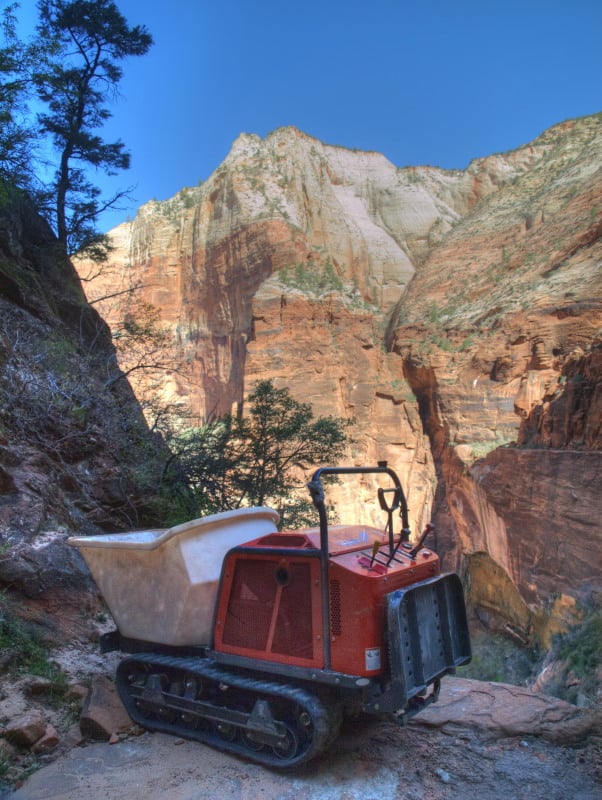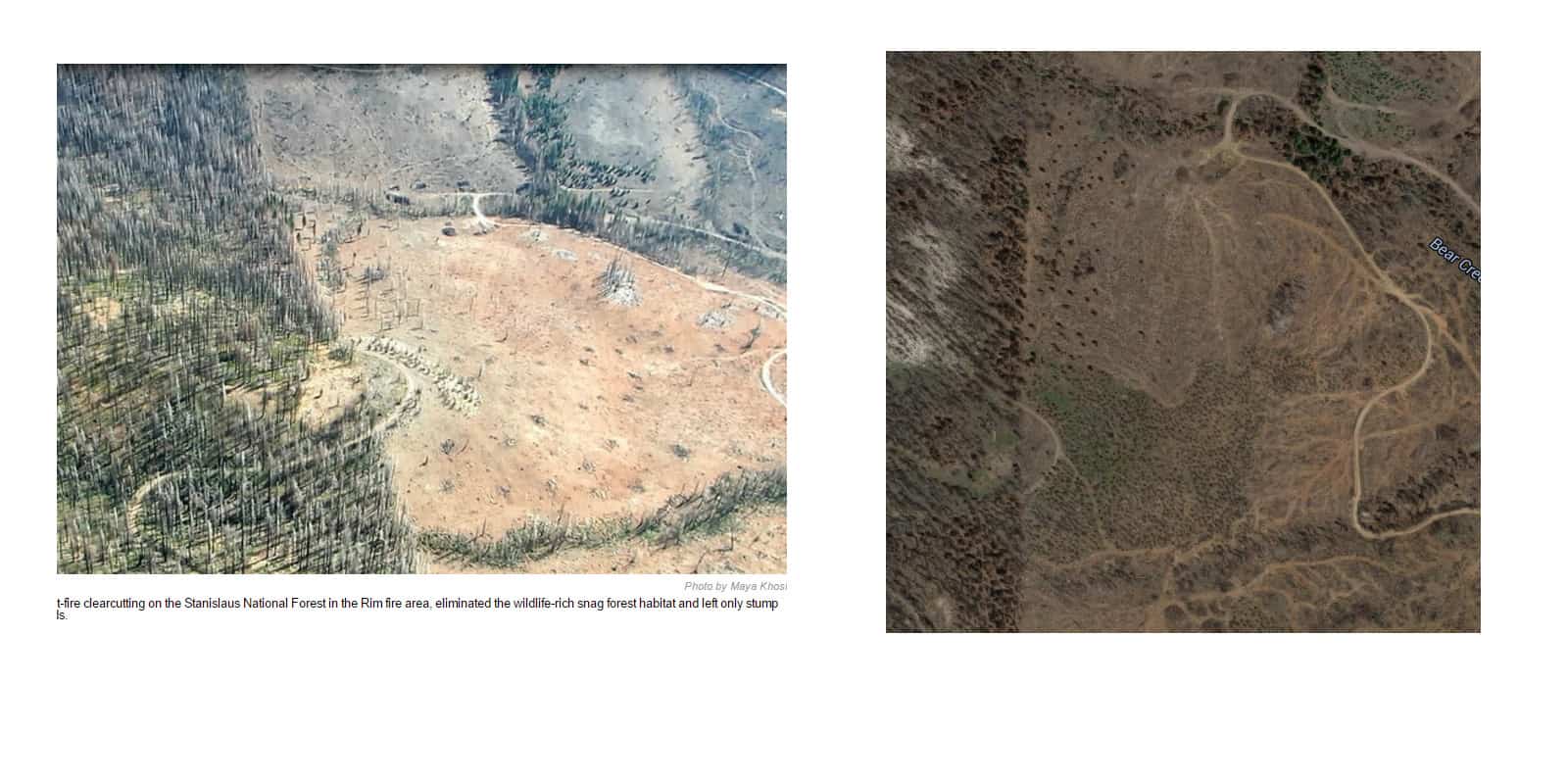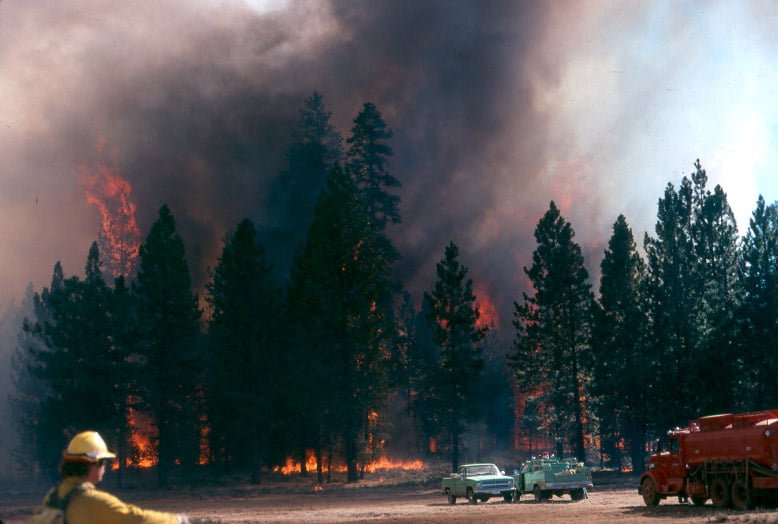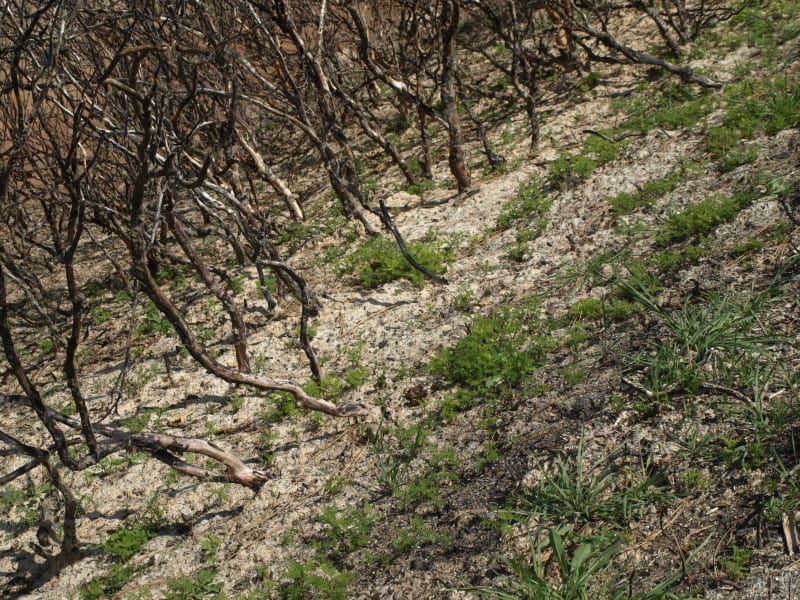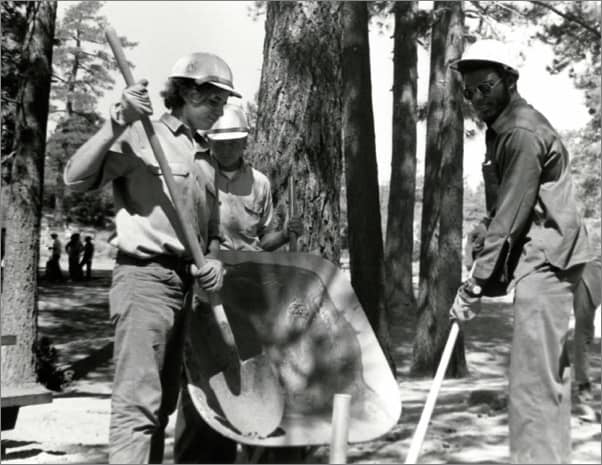A good friend who worked in the Forest Service before the 1964 Wilderness Act asked me if I had heard of a Merry Packer. I had not heard of them. He then described this motorized contraption that ferried equipment up trails in remote areas. The full picture is here.

My friend Tom commented about their use:
“Look!”
I looked. It was hard not to. We had just broke camp and started down the trail when the morning fog boiling up out of the canyon burst a hole a couple of miles away across the gorge, and in that hole, perfectly framed in corpuscular rays, sparkled a waterfall. It was quite a sight… and possibly my last!
Landers stumbled on a raised root in the trail just as he pointed with his right hand at the waterfall. His left hand on the throttle squeezed involuntarily as he struggled for balance. The little engine revved, kicking the mechanical mule in the ass just as we came out of a switchback. We came WAY out. I was up front, leaning back on the handles, supposedly steering, hopping and tiptoeing over rocks and roots, my feet on the ground only now and then.
We were having way too much fun again with this thing, and, way out here in the Douglas fir forests of the Wind River District above the Columbia River Gorge, no one was looking….and we were getting paid, too! Without having to carry gear, we moved fast, almost effortlessly, and we cleared a lot of trail……until Landers spotted that waterfall. I was lifted in the air about two feet before going over the edge, followed by all of our stuff – chainsaws, axes, sleeping bags, raingear, food, canteens and mosquito nets. Only a sleeping bag landed on me as I tumbled. Thank God that machine missed me. Landers fell on his face in the trail, laughing.
The adults in the Forest Service had declared us the Trail Crew, showed us how to start this thing, then sent us into the wilds. Its called a Merry Packer. They’re like those deer carriers, but motorized. Are they still around?”
I hadn’t seen one in all my years in the Forest Service. I’m sure they were used a lot, in trail construction, before the restrictions on “motorized use”. On a recent trip to Zion, I saw, maybe, its replacement, in this more modern world. I’m sure that they had to fly this machine up to this strategic spot on the East Rim Trail.
